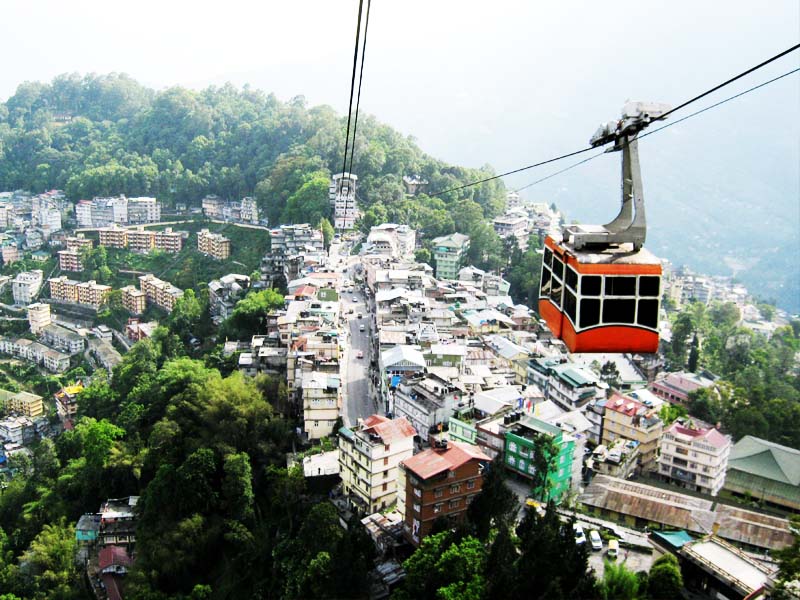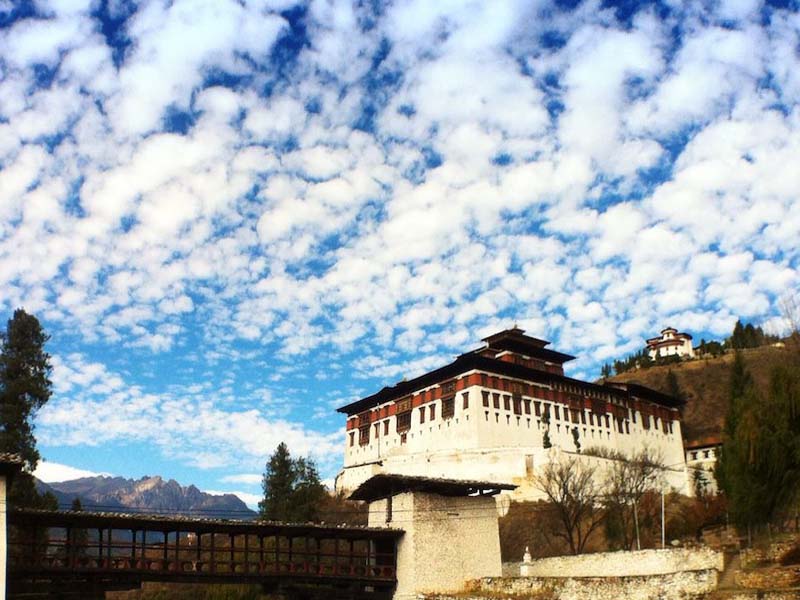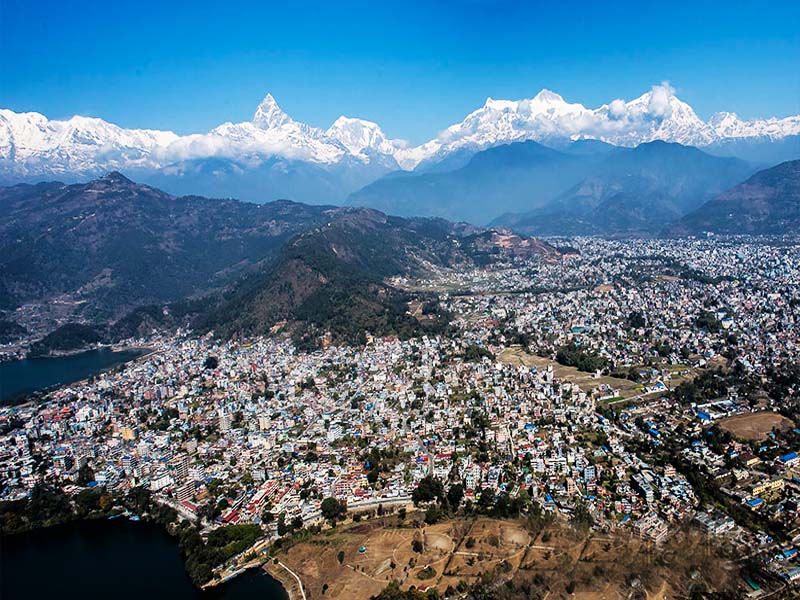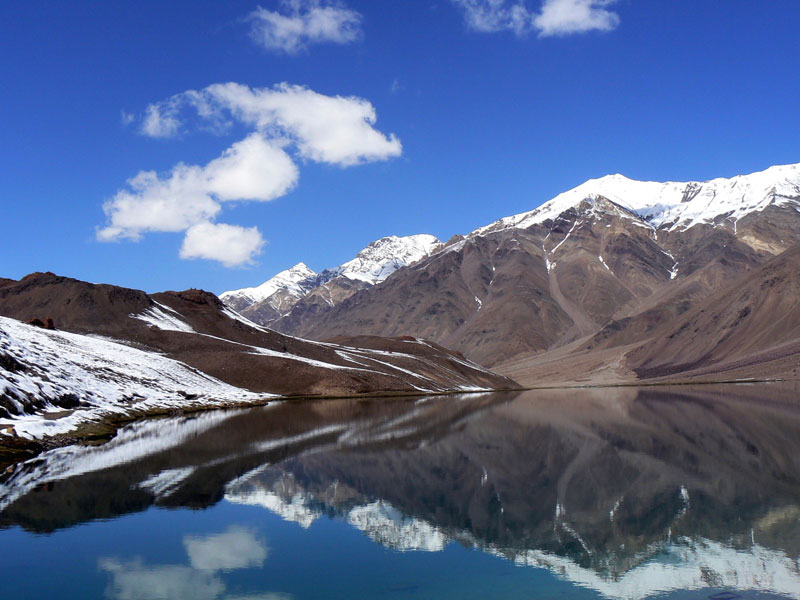DAY 01 : DELHI - BAGDOGRA GANGTOK (4/5 HRS)
After breakfast check out hotel then transport to domestic airport & Open
arrival in Bagdogra Airport meet and welcome you by tour guide at the
airport and then transfer you on a journey to Gangtok, on the way stop at
Border line area at Rangpo between (Sikkim & west Bengal) for immigration.
After short break drive to capital of Sikkim Gangtok. Tucked away in the
clouds, Gangtok is spread out on a ridge 1860 m above sea level, and looks
something out of a fairy tale with houses precariously balanced on the
slopes of steep hills. Apart from the gorgeous view of deep valleys,
waterfalls and snow-capped mountain ranges that separate from neighboring
Tibet, Bhutan and Nepal. On arrival check inn to hotel over night at
Gangtok.
DAY 02 : GANGTOK - RAVANGLA (HALF DAY SIGHTSEEING)(4 HRS )(B,D)
After breakfast, transfer to airport for your domestic flight to Bagdogra by
Jet Airways flight 9W 2452 leaving 1225 hour and arriving 1330 hour. Arrive
Bagdogra airport and welcome by your tour guide at the airport and then
drive to Gangtok. Tucked away in the clouds, Gangtok is spread out on a
ridge 1520m above sea level, and looks something out of a fairy tale with
houses precariously balanced on the slopes of steep hills. Apart from the
gorgeous view of deep valleys, waterfalls and snow-capped mountain ranges
that separate from neighbouring Tibet, Bhutan and Nepal.
DAY 03 : RAVANGLA - NAMCHI - DARJEELING ( 4 HRS )(B,D)
After breakfast drive to Buddha Park at Ravongla & drive to Namchi visit
Chardham Lord Shiva incarnated as Kirateshwar in Indrakeel (Present Sikkim).
Therefore, in this incarnation he is locally worshipped by the people of
Sikkim as Lord Kirateshwar. A statue of 16 1/2 feet height of Lord
Kirateshwar is also installed in the complex. In order to attain Moksha, the
Hindu belief is to perform pilgrimage to all the existing four Dhams.
Thereby, replicas of these four Dhams, namely Badrinath, Jaganath and Dwarka
dedicated to Lord Vishnu and Rameshwar, dedicated to Lord Shiva on complete
drive to Sanguptse highest statue guru Padmashambawa ( Guru Rimponge) after
Sangduptse on completed drive to Darjeeling over night at Darjeeling.
DAY 04 : DARJEELING HALF DAY SIGHTSEEING – SLIGURI (4 HRS)(B,D)
Depart hotel at about 4am for Tiger Hill (2585m) for sun rising view and a
panoramic view of the spectacular snow-clad mountain peaks of the Himalayan
Range.Visit to the Ghoom Monastery, built in 1850 by Lama Sharb, which
enshrines a 15ft. Statue of Maitreya Buddha back to hotel for breakfast
after breakfast start sightseeing around city area visit the Himalayan
Zoological Park. The zoo serves as a breeding center for snow leopards and
red pandas, as well as a home for mountain yaks, Himalayan black bears and
Siberian Tigers. Visit the Himalayan Mountaineering Institute, located
within this zoo, which was founded in 1954 to commemorate history's first
successful conquest of Mt. Everest in 1953 by 'Darjeeling's son, Tenzing
Norgay and Sir Edmund Hillary. Drive back to hotel check out then lunch
after lunch drive to 4 Hrs journey to Sliguri over night at Sliguri.
DAY 05 : SILIGURI - PARO - THIMPU
After breakfast check out from hotel then transfer to International Bagdogra
flight for Bhutan open arrival at Paro Airport then transfer to Thimpu visit
Simtokha Dzong, the oldest fortress of the Kingdom which now houses the
School for religious and cultural studies.After checking into hotel proceed
on to visit Trashichhodzong, the beautiful medieval fortress/monastery which
houses most of the Government's office and King's Throne room It is also the
summer residence of Je Khenpo, the Chief Abbot. Later visit National
Memorial Chorten. The building of this landmark was originally envisaged by
Bhutan’s third king, His Majesty Jigme Dorji Wangchuk (“the father of modern
Bhutan”) who has wished to erect monument to world peace and prosperity.
Completed in 1974 after his untimely death, it serves both as a memorial to
the Late King and as a monument to peace.
DAY 06 : THIMPU - PUNAKHA (75 KM, 3 HOURS’ DRIVE)
Proceed to the National Library which houses an extensive collection of
Buddhist literature, with some works dating back several hundred years.
Visit the nearby Institute for Zorig Chusum (commonly known as the Painting
School), where a six year training course is given in the 13 traditional
arts and crafts of Bhutan. Visit the nearby Institute for Zorig Chusum
(commonly known as the Painting School), where a six year training course is
given in the 13 traditional arts and crafts of Bhutan. Also visit Textile
and Folk Heritage Museum: These museums, both of which opened in 2001,
provide fascinating insights into Bhutanese material culture and way of
life. Later continue on to Handicrafts Emporium that displays wide
assortment of beautifully handwoven and crafted products.
Afternoon drive to Punakha across Dochu-la pass (3,088m/ 10,130 ft) stopping
briefly here to take in the view and admire the chorten, mani wall, and
prayer flags which decorate the highest point on the road. If skies are
clear, the following peaks can be seen from this pass (left to right):
Masagang (7,158m), Tsendagang (6,960m), Terigang (7,060m ), Jejegangphugang
(7,158 m ), Kangphugang (7,170 m ), Zongphugang (7, 060 m ), a table
mountain that dominates the isolated region of Lunana - finally Gangkar
puensum, the highest peak in Bhutan at 7,497m.
DAY 07 : PUNAKHA - PARO
Morning visit Punakha Dzong, a massive structure built at the junction of
two rivers. It was the capital of Bhutan until 1955, and still serves as the
winter residence of the monk body. The first King, Ugyen Wangchuck was
crowned here in 1907. The fortress has withstood several damages from fire,
earthquake and flood. The latest flood of Oct' 1994 caused great damages to
the fortress but miraculously spared the statue of Buddha Jojampa. Followed
by visit to local market.
Drive to Paro, Upon arrival check in at the Hotel. Later visit Ta Dzong :
once a watchtower, built to defend Rinpung Dzong during inter-valley wars of
the 17th century, Ta Dzong was inaugurated as Bhutan's National Museum in
1968. It holds fascinating collection of art, relics, religious thangkha
paintings and Bhutan's exquisite postage stamps. The museum circular shape
augments its varied collection displayed over several floors Afterwards,
walk down a hillside trail to visit Rinpung Dzong, which has a long and
fascinating history. Built in 1646 by Shabdrung Ngawang Namgyal , the first
spiritual and temporal ruler of Bhutan, the Dzong houses the monastic body
of Paro, the office of the Dzongda (district administrative head) and
Thrimpon (judge) of Paro district. The approach to the Dzong is through a
traditional covered bridge called Nemi Zam. A walk through the bridge, over
a stone inlaid path, offers a good view of the architectural wonder of the
Dzong as well as life around it. It is also the venue of Paro Tshechu, held
once a year in the spring.
DAY 08 : PARO TIGER NEST MONASTERY EXCURSION
Morning after breakfast excursion to Taktshang Monastery (5hrs hike): It is
one of the most famous of Bhutan’s monasteries, perched on the side of a
cliff 900m above the Paro valley floor. It is said that Guru Rinpoche
arrived here on the back of a tigress and meditated at this monastery and
hence it is called ‘Tiger’s Nest’. This site has been recognised as a most
sacred place and visited by Shabdrung Ngawang Namgyal in 1646 and now
visited by all Bhutanese at least once in their lifetime. On 19 April, 1998,
a fire severely damaged the main structure of building but now this
Bhutanese jewel has been restored to its original splendour.
Afternoon: Visit Drukgyel Dzong: This Dzong, with a delightful village
nestling at its foot, was built in 1646 by Shabdrung Ngawang Namgyal to
commemorate his victory over the Tibetan invaders. Historically and
strategically this Dzong withstood all its glory and was featured in 1914
vide National Geographic magazine. The glory of Drukgyel Dzong remained even
when it was destroyed by fire in 1951. On a clear day, one can see the
commanding view of Mount. Chomolhari from the village, below the Dzong.
DAY 09 : THIMPU
Full day sightseeing - visit Dup-Thop Lhakhang and the nunnery, Changangkha
Lhakhang, the mini zoo to see " Takin" the national animal of Bhutan, view
point, Indigenous Hospital (Institute of Traditional Medicine), National
Library, which holds a vast collection of ancient Buddhist texts and
manuscripts, some dating back several hundred years, as well as modern
academic books mainly on Himalayan culture and religion, also houses the
biggest book of the world;
Zorig Chusum (Painting School, students are
taught to learn on the 13 traditional arts and crafts of Bhutan), Folk
Heritage Museum, built in 2001, provides fascinating insights of Bhutanese
culture and way of life, Textile Museum, houses a fine collection of
Bhutanese textiles; Memorial Chorten, built and completed in the year 1974
after his(Third King of Bhutan) untimely death, it is both a memorial of the
Late King and a monument to world peace. The paintings and statues inside
the monument provide a deep insight into Buddhist philosophy; Post &
telegraph office to see Bhutanese stamps; visit/view Khamsum Yulley Namgyel
Chorten Tashichhodzong- This huge fortress houses the main Secretariat
building, the throne room of His Majesty the King and various government
offices. It is also the summer residence of Chief Abbot " Je-Khempo" and the
central monk-body; and visit Handicrafts Emporium: This
government-undertaking Emporium displays a wide range of beautifully
hand-woven textiles, craft, and a small collection of books on Bhutan,
Buddhism and Himalayan culture. Overnight Thimphu.
DAY 10 : DELHI - SINGAPORE
Morning transfer to Paro Airport to board on your flight back home with
lasting memories. (Check in 2 hrs prior to departure).






